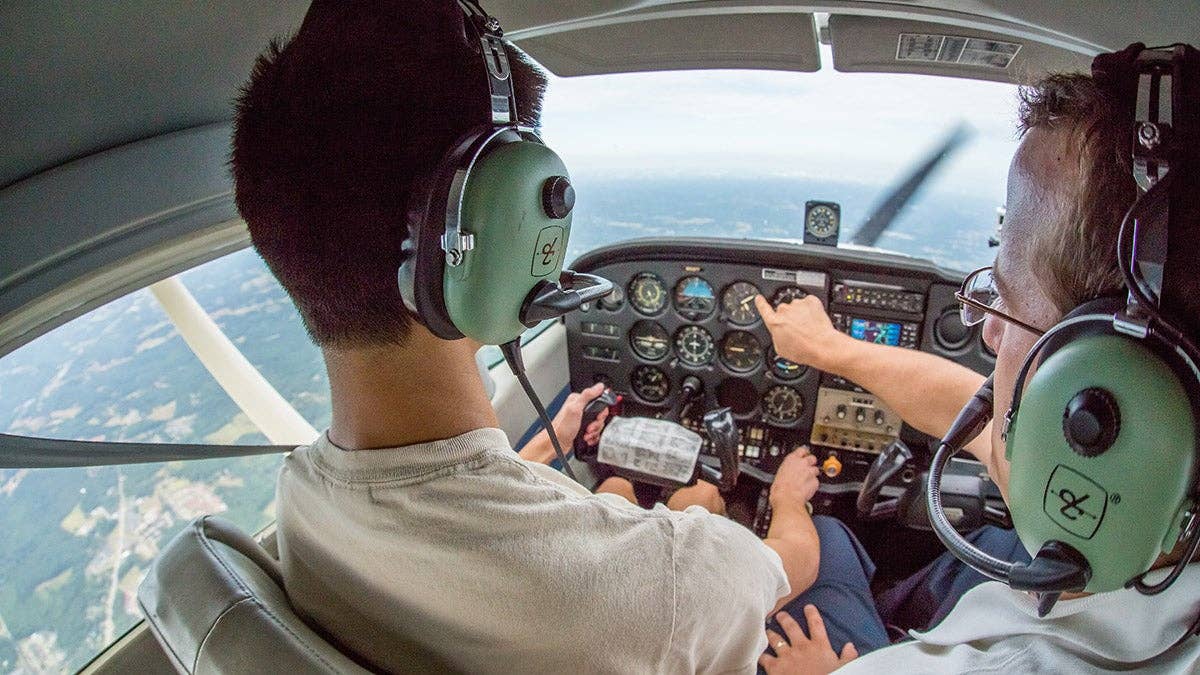
Elected officials, Catalina Island Conservancy leaders and military personnel participated in the opening ceremony for the ACE Clearwater Airfield. Courtesy Catalina Island Conservancy
Right in time for the busy summer flying season, after several months of work on the surface of Runway 04-22 at Catalina Island's Airport in the Sky (KAVX), also called ACE Clearwater Airfield, pilots can finally pop over for the immensely popular Buffalo burgers at the mountaintop airport's restaurant – the DC-3 Gifts & Grill – or to take a bus to the picturesque town of Avalon. The Catalina Island Conservancy opened the airport on May 3 with a ceremony that included a DC-3, making the first landing, and a formation flyover of six Nanchang CJ-6 military trainers.
It was fitting to have the beautifully restored 1947 DC-3 christen the fresh pavement as the classic airplane flew airmail and cargo for decades to the island. And it wasn’t just any old DC-3. The airplane in attendance was originally purchased from the Douglas Aircraft Company by Philip K. Wrigley, who took over the highly successful Wrigley Company from his father William Wrigley Jr. and also operated the Chicago Cubs baseball team. Named Wasp, the airplane is now owned by Alison Wrigley Rusack and Geoff Rusack, who were honored with landing certificate number 1 at the ACE Clearwater Airfield.
William Wrigley Jr. bought Catalina island in 1919 and used it as a training facility for the Chicago Cubs to promote it as a tourist destination. Today, the Wrigley family remains part owners of the island, but most of the property was deeded by Philip Wrigley, his wife and sister, to the Catalina Island Conservancy in 1975.
The restoration of the runway began in December, and nearly 200 Marines and Seebees from the local Marine Corps Base Camp Pendleton and Marine Corps Air Station Miramar invaded the island in January for an extended stay to participate in the restoration project.
“We had a wonderful experience working with the military from the first meeting to the end,” said the Catalina Island Conservancy CEO Tony Burovich. “They showed exemplary service and capabilities, and learned what it was like to work on Catalina. It’s a remote and sometimes difficult place to make things happen, but they had success. They stayed on schedule and did a fantastic job.”
The runway had required about $250,000 in annual repair and labor costs due to recurring potholes and other damage to the runway, taxiway and parking areas. The California Department of Transportation’s Aeronautics Division had told the Conservancy that it needed a long-term repair plan in place by September 2018 in order to continue to operate the airport. The airport sees about 14,000 operations annually.

Sign-up for newsletters & special offers!
Get the latest FLYING stories & special offers delivered directly to your inbox






